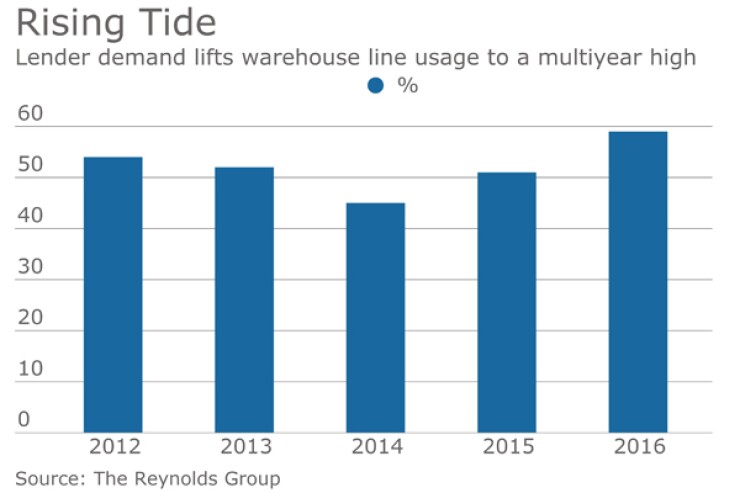

High origination volume and increased nonbank participation fueled another banner year for warehouse lenders, according to The Reynolds Group's annual warehouse lending survey.
Estimated annualized funding levels climbed to $1.38 trillion in 2016,
"Big banks gave a lot of the market to independents who need warehouse lines. This truly was one of the big reasons for this jump in warehouse demand," said James Reynolds III, managing partner of The Reynolds Group in Summit, N.J.
The Total Available Facility Level of the 79 warehouse lenders surveyed in 2016 was $142 billion, up from $105 billion based on a survey of 78 respondents in 2015.
Outstandings, or the amount actually borrowed, averaged $83 billion. This represented an increase from $54 billion in 2015.
Usage, defined as outstandings as a percentage of TAFL, hit a multiyear high of 59%. Warehouse line of credit usage was 51% the year before.
"In our previous survey, we reported that 2015 was considered to be 'a very good year' for warehouse lenders. With many of the concerns/uncertainties associated with the new TRID requirements subsiding somewhat by the end of the first quarter, coupled with the low interest rate environment, 2016 was an even better year," Reynolds said in the survey's overview.
However, the average warehouse line turn time, reflecting the period between the advance of funds and the repayment of the loan after its sale, was a little longer in 2016. The average turn time was 20-24 days as compared to 19 days in 2015.
"The higher turn level in 2016 reflected the significant volume level increase, which challenged capacity levels at a number of WHLs," Reynolds said.
Also contributing to longer average turn times last year was the adjustment to the TILA-RESPA integrated disclosure rules.
Warehouse lending has been slower for some less-diversified players so far this year, but the decline could be seasonal, said Reynolds.
Anecdotally, activity at traditional warehouse lenders that provide funding secured by standard agency collateral has been down by as much as 30% or 40%, he said.





